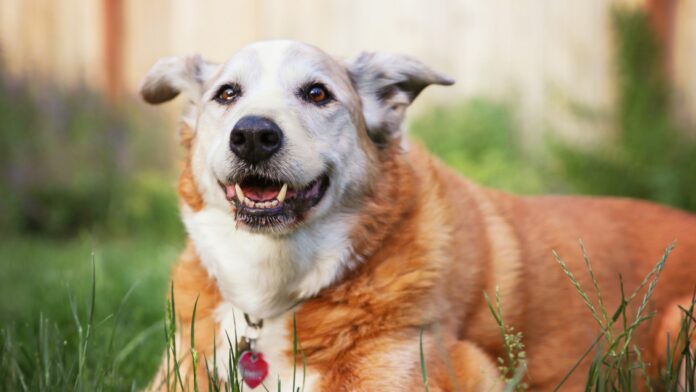Understanding why is dog being extra clingy is crucial for both your well-being and your furry friend’s. This article explores the various reasons behind this behavior, how to manage it, and when to seek professional help. Dogs are known for their loyalty and affection, but sometimes they can become overly clingy.
Understanding Why is Dog Being Extra Clingy
What Does Clingy Behavior Look Like?
When your dog is being extra clingy, they might follow you around the house, refuse to leave your side, or become anxious when you’re out of sight. This behavior can be endearing at times, but it can also be a sign of underlying issues that need to be addressed.
Common Triggers for Clinginess (Why is Dog Being Extra Clingy)
Changes in the Environment
Dogs thrive on routine and familiarity. Any changes in their environment, such as moving to a new home, changes in family dynamics, or even a change in your daily routine, can trigger clingy behavior.
- Moving to a New Home: Dogs can feel insecure in unfamiliar surroundings, leading them to seek comfort from their owners.
- New Family Members: The arrival of a new baby or pet can make your dog feel neglected, causing them to become clingy.
- Routine Changes: Changes in your schedule can disrupt your dog’s routine, leading to anxiety and clinginess.
Health Issues Impacts on Why is Dog Being Extra Clingy
Clingy behavior can sometimes indicate that your dog is not feeling well. Health problems can cause discomfort and anxiety, prompting your dog to seek reassurance from you.
- Pain or Discomfort: If your dog is in pain, they may cling to you more for comfort.
- Illness: Illnesses that cause discomfort or weakness can lead to increased clinginess.
Emotional Causes
Emotional factors such as anxiety, fear, and insecurity can also lead to clingy behavior in dogs.
- Separation Anxiety: Dogs with separation anxiety become extremely anxious when left alone, leading to clinginess when you’re home.
- Fear or Trauma: Past traumatic experiences or general fearfulness can make a dog more dependent on their owner for a sense of security.
How to Recognize Clingy Behavior (Why is Dog Being Extra Clingy)
Signs Your Dog is Being Extra Clingy
Recognizing clingy behavior in your dog is the first step to addressing it. Here are some common signs:
- Following You Everywhere: A clingy dog will follow you from room to room, not wanting to be left alone.
- Constant Need for Physical Contact: Clingy dogs may always want to be in physical contact with you, such as sitting on your lap or leaning against you.
- Distress When Left Alone: Clingy dogs often show signs of distress when left alone, including barking, whining, and destructive behavior.
When Clinginess Becomes a Problem
While some clinginess is normal, it becomes problematic when it interferes with your dog’s well-being or your daily life. Excessive clinginess can lead to stress and anxiety for both you and your dog.
Managing Why is Dog Being Extra Clingy
Creating a Safe and Comfortable Environment
Creating a safe and comfortable environment for your dog can help reduce their clinginess. Here are some tips:
- Designated Safe Space: Provide a cozy and quiet area where your dog can retreat to when they feel anxious.
- Comfort Items: Include your dog’s favorite toys and blankets in their safe space to make them feel more secure.
Establishing Routines
Dogs feel more secure with consistent routines. Establishing a regular schedule for feeding, walking, and playtime can help reduce anxiety and clinginess.
- Consistent Feeding Times: Maintain a regular feeding schedule to provide structure and stability for your dog.
- Regular Exercise: Ensure your dog gets enough physical activity to reduce excess energy and anxiety.
Encouraging Independence
Encouraging your dog to be more independent is key to reducing clingy behavior.
- Gradual Desensitization: Gradually get your dog used to being alone for short periods and slowly increase the time.
- Positive Reinforcement: Reward your dog for calm and independent behavior with treats and praise.
ALSO READ: Mastering the Art of Dog Training: Unleashing the Power of “Follow My Lead”
Training Techniques to Reduce Clinginess
Obedience Training
Obedience training can help reduce clinginess by promoting independence and providing mental stimulation.
- Basic Commands: Teach your dog basic commands like sit, stay, and come to help them feel more secure and less dependent on you.
- Advanced Commands: Advanced commands like stay for longer periods can further help reduce clinginess.
Independent Play Training
Encouraging your dog to play independently can help reduce their reliance on you for entertainment.
- Interactive Toys: Provide toys that challenge your dog’s mind and keep them engaged.
- Puzzle Games: Puzzle games that dispense treats can keep your dog occupied and mentally stimulated.
When to Seek Professional Help About Why is Dog Being Extra Clingy
Consulting a Veterinarian
If your dog’s clinginess is severe, it’s important to consult a veterinarian to rule out any underlying health issues.
- Health Check: A thorough health check can identify any medical reasons for your dog’s clinginess.
Working with a Professional Dog Trainer
A professional dog trainer can help develop a tailored training plan to address your dog’s clinginess.
- Behavioral Training: A professional can provide techniques to reduce clinginess and promote independence.
Behavioral Therapy
In some cases, behavioral therapy with a certified animal behaviorist may be necessary.
- Therapy Sessions: Therapy sessions can help address deep-seated issues causing clinginess.
Understanding the Role of Breed and Personality
Breeds Prone to Clinginess
Some dog breeds are naturally more prone to clingy behavior due to their genetic predisposition.
- Examples of Clingy Breeds: Breeds like the Maltese, Chihuahua, and French Bulldog are known for their strong attachment to their owners.
Individual Personality Traits
Just like humans, dogs have individual personalities. Some dogs are naturally more independent, while others may be more inclined to seek constant companionship.
- Personality Assessment: Understanding your dog’s personality can help in managing their clinginess effectively.
Conclusion
Understanding why is dog being extra clingy is crucial for addressing the behavior effectively. By recognizing the signs of clinginess, managing the environment, and using appropriate training techniques, you can help your dog become more independent and reduce their anxiety.
FAQs Why is Dog Being Extra Clingy
1. Why is my dog being extra clingy all of a sudden?
Sudden clinginess in dogs can be due to changes in their environment, health issues, or emotional factors such as anxiety and fear.
2. How can I help my clingy dog become more independent?
Encourage independence through gradual desensitization, positive reinforcement, and providing a safe and comfortable environment.
3. Is it normal for dogs to be clingy?
Some level of clinginess is normal, but excessive clinginess can indicate underlying issues that need addressing.
4. When should I seek professional help for my dog’s clinginess?
Seek professional help if your dog’s clinginess is severe or affecting their quality of life.
5. Can certain dog breeds be more prone to clinginess?
Yes, some dog breeds, like Maltese, Chihuahuas, and French Bulldogs, are naturally more prone to clingy behavior due to their genetic predisposition.


